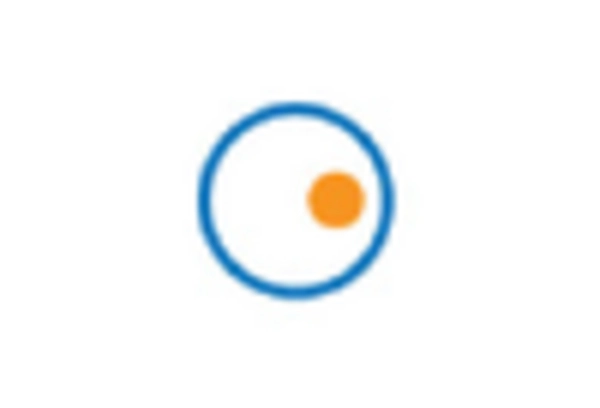Increasing Investment in Healthcare R&D
The surge in investment in healthcare research and development is a critical driver for the Nano Healthcare Technology for Medical Equipment Market. Governments and private entities are allocating substantial funds to explore innovative healthcare solutions, including nanotechnology applications. This influx of capital is fostering the development of cutting-edge medical equipment that leverages nanoscale technologies. Recent reports indicate that healthcare R&D spending is on an upward trajectory, with projections suggesting a significant increase in funding for nanotechnology research. This trend is likely to accelerate the introduction of novel nano-enabled medical devices into the market.
Growing Awareness of Personalized Medicine
The growing awareness and demand for personalized medicine are shaping the Nano Healthcare Technology for Medical Equipment Market. Patients and healthcare providers are increasingly recognizing the benefits of tailored treatment approaches that utilize nanotechnology for improved efficacy. This shift towards personalized healthcare is driving the development of nano-enabled medical equipment that can deliver targeted therapies and diagnostics. Market analyses suggest that the personalized medicine sector is expanding rapidly, with projections indicating a potential market size that could reach billions in the coming years. This trend is likely to enhance the adoption of nanotechnology in medical devices.
Technological Advancements in Nanotechnology
Technological advancements in nanotechnology are significantly influencing the Nano Healthcare Technology for Medical Equipment Market. Innovations in nanomaterials and their applications in medical devices are enhancing diagnostic and therapeutic capabilities. For instance, the development of nanosensors and drug delivery systems is revolutionizing patient care. The market for nanotechnology in healthcare is expected to witness robust growth, with estimates suggesting a compound annual growth rate that could exceed 10% over the next few years. These advancements not only improve patient outcomes but also drive the adoption of nano-enabled medical equipment across various healthcare settings.
Rising Demand for Minimally Invasive Procedures
The increasing preference for minimally invasive procedures is a notable driver for the Nano Healthcare Technology for Medical Equipment Market. Patients are increasingly seeking treatments that reduce recovery time and minimize surgical risks. This trend is reflected in the growing number of procedures utilizing nanotechnology, which enhances precision and efficacy. According to recent data, the market for minimally invasive surgical devices is projected to reach substantial figures, indicating a shift towards advanced medical solutions. As healthcare providers adopt these technologies, the demand for nano-enabled medical equipment is likely to surge, further propelling the market forward.
Regulatory Support for Nanotechnology Innovations
Regulatory support for innovations in nanotechnology is emerging as a vital driver for the Nano Healthcare Technology for Medical Equipment Market. Regulatory bodies are increasingly recognizing the potential of nanotechnology to improve healthcare outcomes and are establishing frameworks to facilitate its integration into medical devices. This supportive environment is encouraging manufacturers to invest in the development of nano-enabled equipment. Recent regulatory updates indicate a trend towards streamlined approval processes for nanotechnology applications, which could expedite the introduction of new products to the market. As a result, the Nano Healthcare Technology for Medical Equipment Market is likely to experience accelerated growth.

















Leave a Comment